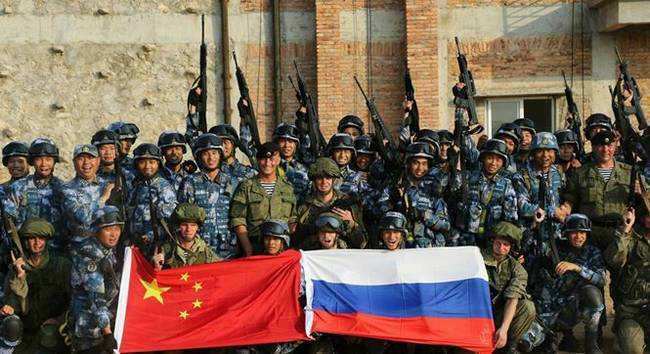
By Wu Jian
After ten months of preparations, the week-long Tsentr(Center)-2019 multinational joint command-and-staff military exercise led by the Ministry of Defence of the Russian Federation officially commenced on Monday.
Troops from the People’s Liberation Army (PLA) drew close attention and were considered as a “front-line main force” not inferior to the Russian forces by TASS and other Russian media. The weapons and equipment brought by the Chinese troops promised an interesting and brilliant joint exercise.
Unprecedented scale
The exercise will last from September 16 to 21, said Deputy Minister of Defence of the Russian Federation Colonel General Alexander Fomin, and128,000 troops from various countries will participate and over 20,000 pieces of large ground weapons and equipment will be mobilized, not to mention the 600 aircraft and helicopters and 15 vessels, he added.
The “Tsentr 2019” exercise will be carried out at eight locations across Russia, with Totsky, Donguz(Orenburg region), Adanak in the Republic of Dagestan and Chebarkul (Chelyabinsk region) being the main training grounds.
Among them, the Chinese people have the deepest feelings in history for Totsky and Chebarkul because Totsky held the largest-ever “Snowflake” live-fire, actual-troop exercise on September 14, 1954, which involved 45,000 troops and used nearly twice as much ammunition as that used in the Battle of Berlin in 1945, being a “quasi battlefield” in the real sense. Records show that delegations from several socialist countries, including China, were invited to observe the exercise, which was of great help for promoting their national defense construction.
Chebarkul, on the other hand, was the first stop that the PLA ground troops camped when they had the first exercise in Russian hinterland and was a famous place in the Peace Mission serial exercises organized by the Shanghai Cooperation Organization (SCO).
Advanced weapons and equipment
According to statistics from Russia, among the eight participating countries, Russia assigned 126,000 troops and the others assigned 2,250, but such a huge difference in quantity doesn’t mean the foreign troops are here to serve as foil.
The PLA made a striking appearance, for instance. News from Chinese Ministry of National Defense said that China sent around 1,600 soldiers attached to the PLA West Theatre Command, around 300 pieces of military equipment and almost 30 fixed-wing aircraft and helicopters.
Comparing with the numbers of foreign participation released by Russia before, that is, 250 tanks, 450 infantry fighting vehicles (IFVs) and armoured personnel carriers, and 200 artillery and air defense weapons, it’s clear how much importance China has attached to the exercise.
China Central Television(CCTV) reported that the PLA projected all the equipment for a combined battle group to the exercise area using Russia’s railway network, ranging from the Type-96 main battle tank (MBT), Type 04A IFVs and Type 07 122mm self-propelled howitzer to information-processing reconnaissance vehicles, crane-jib armored supply trucks, armored ambulances and even trench excavators. They demonstrate the bountiful achievements that the PLA has made in mechanization and informatization.
Actually, the PLA had devoted a similar scale of troops and equipment to the Vostok-2018 exercise, but then the location on the east bank of Lake Baikal was only about 300km from the Chinese border.
For Tsentr-2019, the projection distance is much longer and the military equipment projected is much more complicated than that of Vostok-2018, testing the power projection capability of Chinese military on a higher level.
It’s worth noting that combined troop is a priority in China’s military construction. Working and coordinating with the richly experienced Russian troops on the battleground is without any doubt of great reference value for China’s military modernization.
Realistic needs
The reality today is that Russia, China and other participating countries (especially Central Asian countries in the majority) are facing common security threats, that is, the violent terrorist forces, the national separatist forces and the religious extreme forces are carrying out subversive and destructive activities and violently attacking national governments using all sorts of excuses, religious or institutional. In some cases, such threats even receive tacit support and propaganda of international forces, whose damaging effects shall not be underestimated.
As the Russian Defense Ministry stressed, the “Tsentr-2019” exercise goes far beyond the military level and observes more than the technical and tactical capabilities of the troops. More importantly, it intends to enhance strategic mutual trust, improve military interactions, and demonstrate the participating countries’ resolve and ability to safeguard regional peace.
Interestingly, the PLA participated in the Russia-led “Tsentr-2019” exercise not long after the two countries announced the establishment of their comprehensive strategic partnership of coordination for a new era and, on the eve of the 70th anniversary of the establishment of their diplomatic ties.
The great significance of this joint exercise is self-evident. Given the complicated international situation today, the close and pragmatic cooperation between Beijing and Moscow in various fields will doubtlessly bring the world more security and confidence.
Disclaimer: This article is originally published on Xinmin News Net, one of the biggest mainstream news network based in Shanghai City. It is translated from Chinese into English and edited by the China Military Online. The information, ideas or opinions appearing in this article do not reflect the views of eng.chinamil.com.cn.









